Roofing work involves risks that require strict safety protocols and standards to safeguard individuals and properties involved. From preventing injury risks to avoiding costly repairs due to improper procedures, roofing safety is a critical aspect of all roofing tasks. As one of San Antonio’s most trusted roofing companies, Shield Roofing uses industry-approved methods to prioritise safety in every project. In this blog, we’ll explore why roofing safety standards matter, what hazards you should know, and how certified roofing contractors help ensure compliance for a safe roof installation process.
Why Roofing Safety Standards Matter for Homeowners
Roofing safety standards are more than just guidelines—they are essential for homeowner protection. Roofing tasks inherently involve risks, and ensuring compliance with safety protocols minimizes accidents. Whether it’s fall protection or safe handling of roofing materials, these measures are designed to ensure structural integrity and reduce injury risks.
Homeowners must also consider legal repercussions of neglecting safety. Non-compliance with insurance requirements or local building codes could lead to fines or denied claims. Safety standards not only offer peace of mind but also safeguard your property investment.
Reducing Injury Risks During Roof Work
Preventing injuries in roofing starts with strategic safety measures. Falls are the leading hazard, often due to unsafe access points, unstable ladders, or inadequate gear. To reduce risks, use sturdy ladders, maintain three points of contact, and keep the work area clean.
Personal fall protection systems like harnesses and guardrails are essential for worker safety at heights, preventing fatal accidents and ensuring compliance with safety standards.
Additionally, comprehensive safety gear—such as non-slip footwear, hard hats, gloves, and goggles—protects against falls and debris during maintenance or replacement projects. Effective fall prevention is crucial for safe roofing practices.
Meeting Legal and Insurance Requirements
Compliance with local building codes is essential for roofing projects, ensuring safety and minimizing legal risks. Homeowners should be aware of necessary permits and safety protocols to avoid costly repairs. Hiring a professional roofer knowledgeable in OSHA guidelines can simplify this process.
Insurance often requires documentation of safety measures. Most insurers mandate that certified contractors use proper fall protection and personal protective equipment, safeguarding homeowners and providing peace of mind in the event of accidents. Understanding these legal and insurance requirements is vital for a successful roofing project.
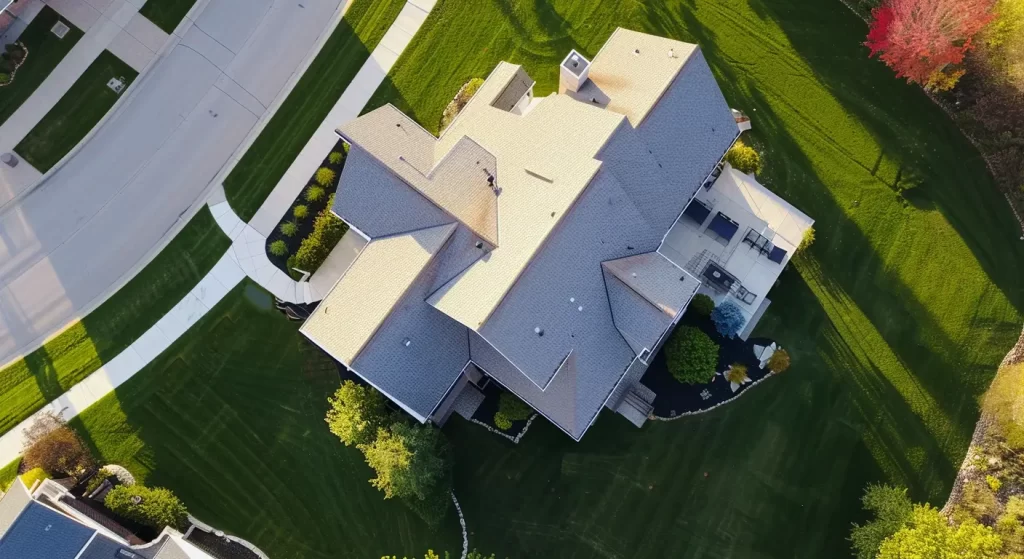
Common Roofing Hazards You Should Know
Roofing hazards pose a threat to both workers and homeowners. Recognizing hazards like severe weather conditions or mishandling of electrical equipment ensures safer roofing activities, even during minor repairs.
Weather-related risks such as high winds or icy surfaces can lead to slips and structural damages. Another common hazard involves power lines and portable electrical tools; improper handling could cause electrocution or fires. By identifying these dangers, homeowners can implement proactive safety measures, creating a secure work environment for all involved.
Falls and Ladder Accidents
Preventing falls and ladder accidents is essential in roofing. A safe environment begins with selecting sturdy ladders that can support the user’s weight and necessary tools. Proper ladder placement on a level surface and adhering to the three-point contact rule significantly reduce fall risks.
Personal fall arrest systems and guardrails provide additional protection. Regular inspections of ladders and the work area help identify hazards like uneven ground or debris. Staying alert to weather conditions during installation or maintenance further enhances safety, ensuring protocols are followed throughout the project. Safety measures are vital for protecting lives.
Electrical and Weather-Related Dangers
Roofing projects pose serious electrical and weather-related hazards. Safety protocols necessitate caution around power lines, as electric shocks can result from improper equipment handling or proximity to live wires. Grounding and maintaining tools mitigates these risks.
Severe weather—high winds, ice, or excessive heat—adds further challenges. It’s essential to work only in safe conditions to prevent slips or structural issues; always check the forecast before starting any work.
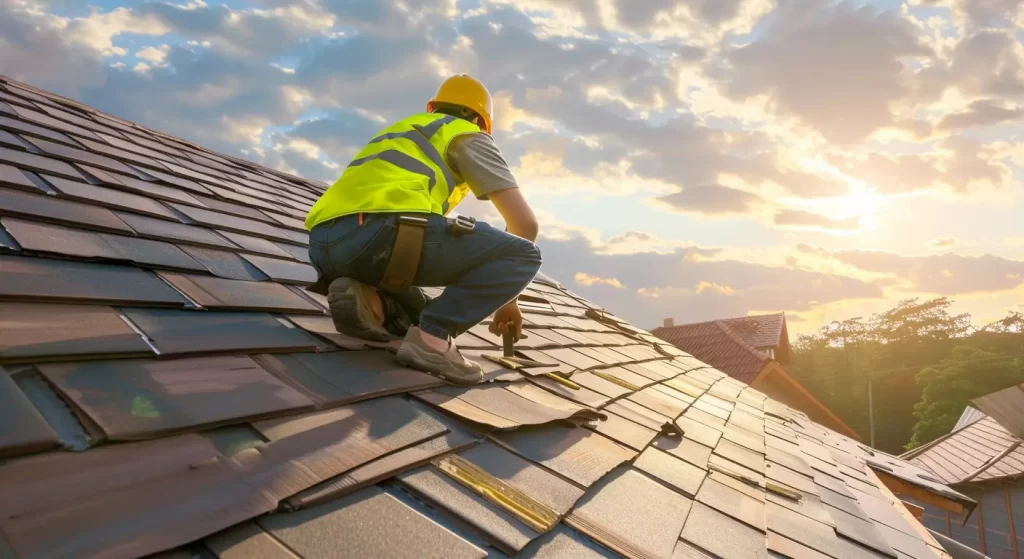
Essential Roof Safety Protocols for Homeowners
Implementing safety protocols during DIY roofing work or minor repairs is essential. From pre-project planning to proper use of personal protective equipment, precautions guarantee a secure work environment for all involved.
Regular inspections could reveal hidden structural issues that demand immediate attention. Following safety guidelines prevents accidents, while aligning with building codes ensures compliance with legal standards. Whether you’re tackling a small task or partnering with certified professionals, priority on safe practices is essential for preserving your home’s roof.
Pre-Project Planning and Preparation
Before starting any roofing project, thorough planning is essential for safety. Assess the area for hazards like sagging structures or nearby power lines and address them beforehand. Use proper safety equipment, including personal protective gear and fall arrest systems, to mitigate risks and protect workers.
Familiarize yourself with local building codes and obtain necessary permits to ensure compliance. Clear communication with all parties, including the contractor, enhances coordination and understanding of safety protocols. An organized approach reduces accident risks and ensures efficient roof installation or repair, protecting your investment and extending your home’s longevity.
Proper Use of Safety Gear and Equipment
Proper safety gear is essential during roofing tasks. Personal protective equipment (PPE) like hard hats, harnesses, and gloves protects workers from physical harm and fall risks.
Guardrail systems serve as primary defenses for open roof areas, preventing falls from edges. Personal fall arrest systems further enhance safety by securely anchoring workers at heights. Quality equipment is crucial; faulty or poorly maintained gear increases risks.
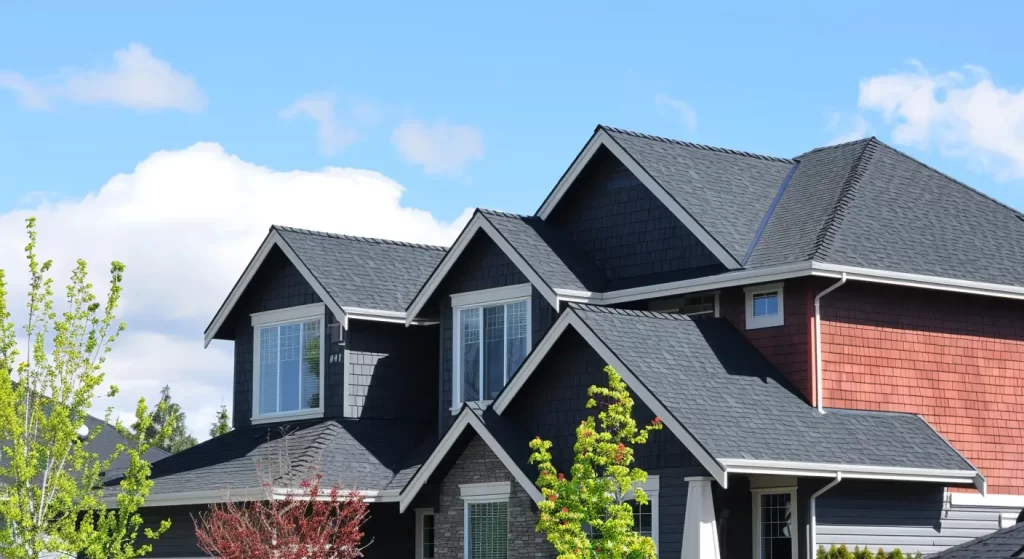
Choosing a Certified Roofing Contractor in San Antonio, TX
Selecting an established contractor can make all the difference between a risky project and smooth execution. Certified companies like Shield Roofing in San Antonio, TX, bring decades of expertise to the table.
Our certifications—including Owens Corning, GAF, BBB A+ rating—reflect our commitment to stringent safety standards. Shield Roofing takes pride in offering robust roofing services tailored for both residential and commercial needs. With a team of trusted professionals, we ensure that your roof is built to last—safe and secure.
The Importance of Credentials
Credentials play a crucial role in ensuring safe roofing practices and quality assurance. Organizations such as Owens Corning and GAF offer certifications that attest to a contractor’s proficiency in safe practices and adherence to industry standards. Additionally, membership in groups like the Better Business Bureau (BBB) and the CRCA indicates a commitment to customer satisfaction and ethical operations. Professional affiliations, such as those with Directorii, further validate a contractor’s compliance with safety regulations, providing homeowners with peace of mind during roofing projects.
Questions to Ask Before Hiring
Verifying a contractor’s credentials is crucial for ensuring quality work and project safety. Ask about their compliance with local building codes and safety standards to minimize hazards. Inquire about their experience with various materials and issues like sagging roofs and missing shingles.
It’s vital to discuss their use of personal protective equipment and fall arrest systems, as well as how they manage risks during adverse weather. Establish clear communication regarding project timelines, contacts, and inspections to ensure your project adheres to safety precautions and maintains a safe environment.
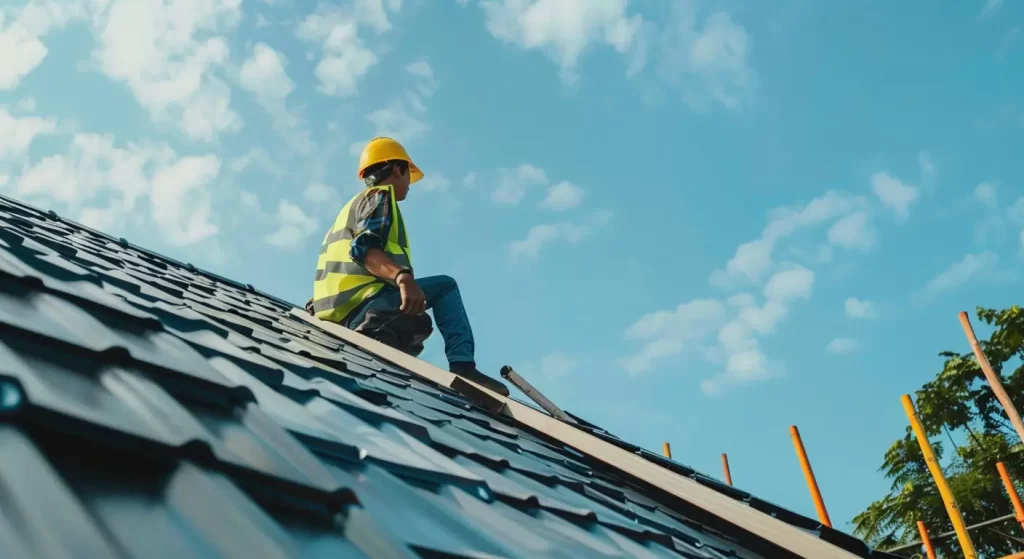
Get in Touch
Understanding and following safe roofing practices standards is essential for homeowners. It reduces accident risks and ensures legal compliance. By identifying hazards and implementing protocols, you can protect yourself and your property. Choosing a certified contractor like Shield Roofing ensures your project meets professional safety standards. With over 25 years of experience and certifications from Owens Corning and GAF, we deliver durable roofs. Contact us today for personalized guidance.
Read our blog: Eco‑friendly Roofing Materials & Sustainability Trends
Frequently Asked Questions
What are the most common roofing safety mistakes homeowners make?
The most frequent mistakes include neglecting proper equipment, failing to plan for weather conditions, and using unstable ladders. Avoid ignoring fall protection systems and ensure work areas are free of obstacles for safe roofing practices.
Do it yourself roofing safety?
DIY requires precautionary measures such as PPE, a stable work environment, and fall protection systems. However, risks like structural damage or accidents often demand professional intervention.
What are common roofing safety mistakes homeowners make?
Roof construction hazards include severe weather conditions, unsafe access points, and exposed electrical equipment. Structural damage from neglect and occupational safety lapses are also significant risks. Prioritizing protocols mitigates these dangers efficiently.
